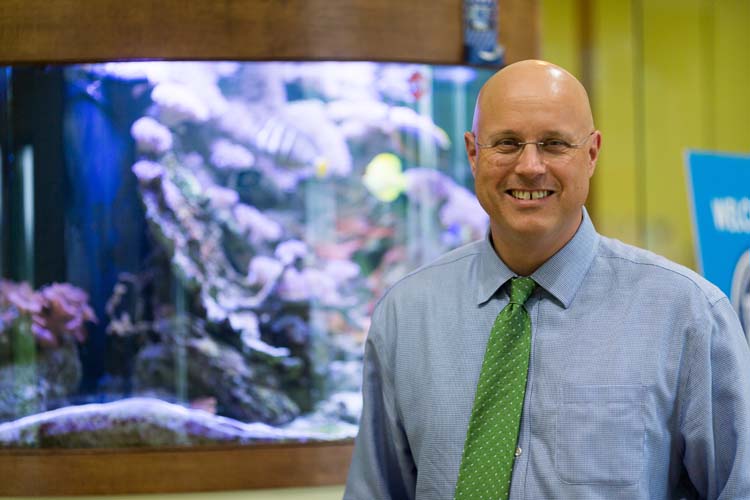By the age of 60, a whopping – and oddly symmetrical – 60 percent of all seniors will develop some form of hiatal hernia.
The Yale University School of Medicine says that super-majority of seniors translates into roughly 15 percent of the total U.S. population.
The good news, according to local surgeon Dr. Patrick Domkowski, is that only 10 percent to 15 percent of hiatal hernias require surgery.
The even better news is that patients who do need surgical relief from hiatal hernias do not need to leave the Treasure Coast to get it.
Domkowski, a Georgetown University medical school graduate who served his internship, fellowship and residency at Duke University and is board-certified by the American Board of Surgery, performs multiple hiatal hernia surgeries right here each month. His patients are in good hands, as he is a fellow of both the American College of Surgeons and the American Society of Metabolic and Bariatric Surgeons, as well as chairman of surgery for the Sebastian River Medical Center.
So, just what is a hiatal hernia?
As Yale describes it, “a hiatal hernia occurs when part of the stomach protrudes upwards through the diaphragm and up into the chest region.”
That protrusion can make life miserable.
Food and stomach acid can back up into the esophagus, leading to heartburn or acid reflux, belching, trouble swallowing, chest pain, shortness of breath, abdominal pain and even the vomiting of blood.
The extremely affable Domkowski, however, quickly steps in to offer some good news.
In the vast majority of cases, he says, the symptoms of hiatal hernias can be “managed medically with a pill that you can buy at Walmart, over the counter.”
Sometimes, however, more sophisticated medical diagnostics and treatment are required.
Breaking out one of the longest words of the conversation, Domkowski says, “When [patients] become symptomatic and they don’t respond to medical therapy, you have to investigate further and that usually involves an EGD, which stands for esophagogastroduodenoscopy.”
Fully aware that most folks don’t carry a medical dictionary around with them, Domkowski leans forwards and explains the term.
An esophagogastroduodenoscopy, he says, is nothing more than “a scope” or a tiny camera used to look inside the upper gastrointestinal track.
With the aid of that and other diagnostic and imaging tools, Domkowski can determine if a “paraesophageal hernia” is the real culprit for a patient’s symptoms.
“That,” Domkowski explains, “is the more complex hiatal hernia. If you take 100 people with hiatal hernia, maybe 10 will have paraesophageal. That’s where part of the stomach actually moves up into the mediastinum. The mediastinum is the space between the left and right lung. It’s where the heart lives, the esophagus lives, and then part of the stomach,” and that, he says, may well indicate a need for surgery.
And while no one likely welcomes the news that surgery is needed, Domkowski’s description of the procedure he favors does seem to soften that blow.
“Ten years ago, 15 years ago, 20 years ago,” Domkowski says, “when I [was initially] trained, we would make a big incision and it was a very difficult recovery. Very painful. Then laparoscopic surgery came along and that changed the playing field. Now, in the last couple of years, the robot is on the scene and the robot has allowed us to, as Emeril Lagasse would say, ‘Kick it up a notch.’”
While some surgeons who haven’t trained extensively on robotic procedures may not feel comfortable employing the newest method of repairing serious hiatal hernias, Domkowski is clearly a fan and he backs that up, saying “the robot has added another level of technology that benefits the patient. And it makes us better surgeons.
“We are able to do these surgeries minimally invasively, robotically, and really restore the patient’s ability to eat, to lose their reflux and return them to a good quality of life. And they do not need to leave the area to have this done.”
Of course, any discussion of any hernia surgery these days needs to include what’s now become a different kind of four-letter word to both surgeons and insurance companies: mesh.
Law firms now regularly advertise on TV about class-action lawsuits involving various synthetic mesh products that, in the past, caused multiple medical problems after surgery.
Domkowski, however, actually smiles when the topic is broached.
“We sometimes do use mesh in these procedures. However, we use an absorbable mesh. Those meshes incorporate [or dissolve] into the diaphragm and become part of it so there’s no chance of recall or infection because they’re biologic. They’re not synthetic mesh, which is normally made of polypropylene or some other synthetic material that can be recalled, can stretch or can get infected.”
Dr. Patrick Domkowski is at Riverside Surgical & Weight Loss Center. He is also the chairman of surgery at the Sebastian River Medical Center. His offices are at 14430 U.S. 1 in Sebastian. The phone number is 772-581-8003.
‘Cutting edge’ hiatal hernia surgery available here

Dr. Patrick Domkowski
